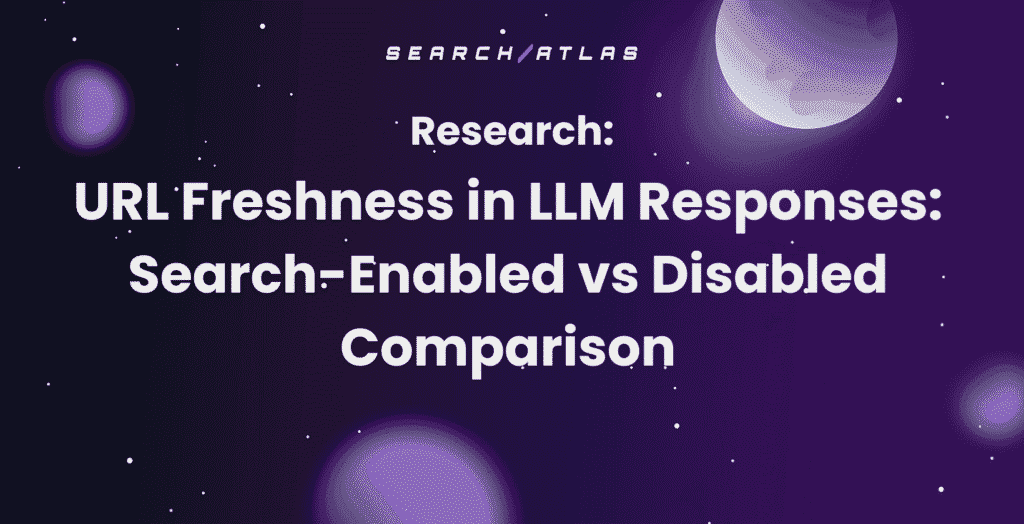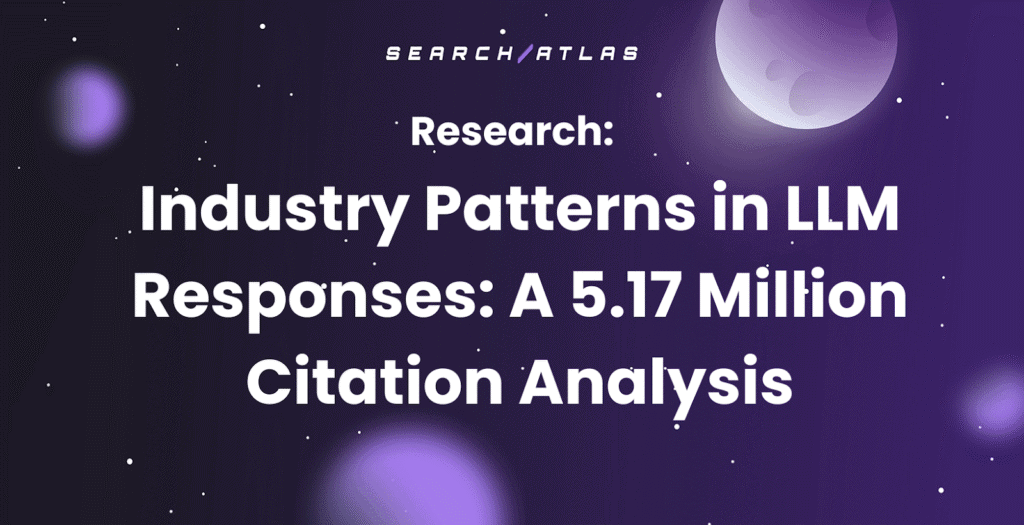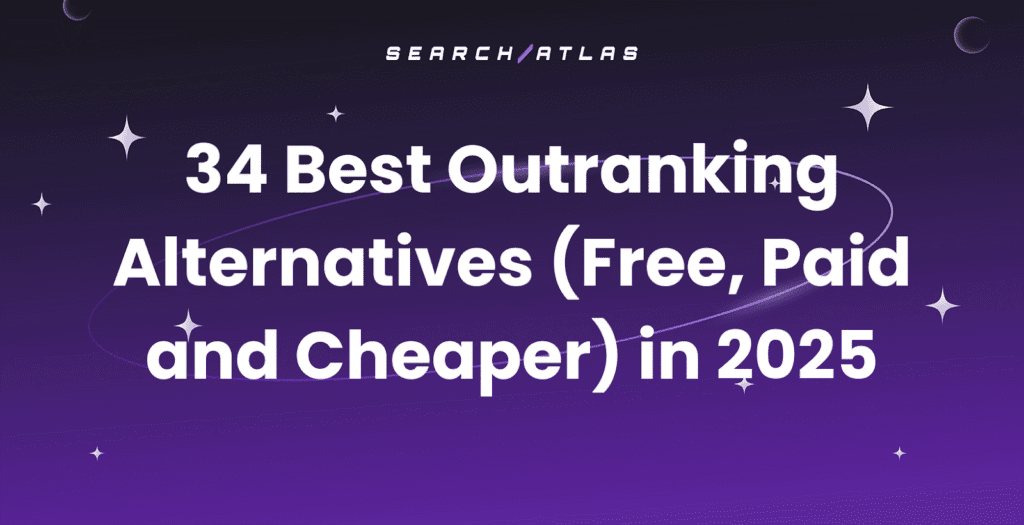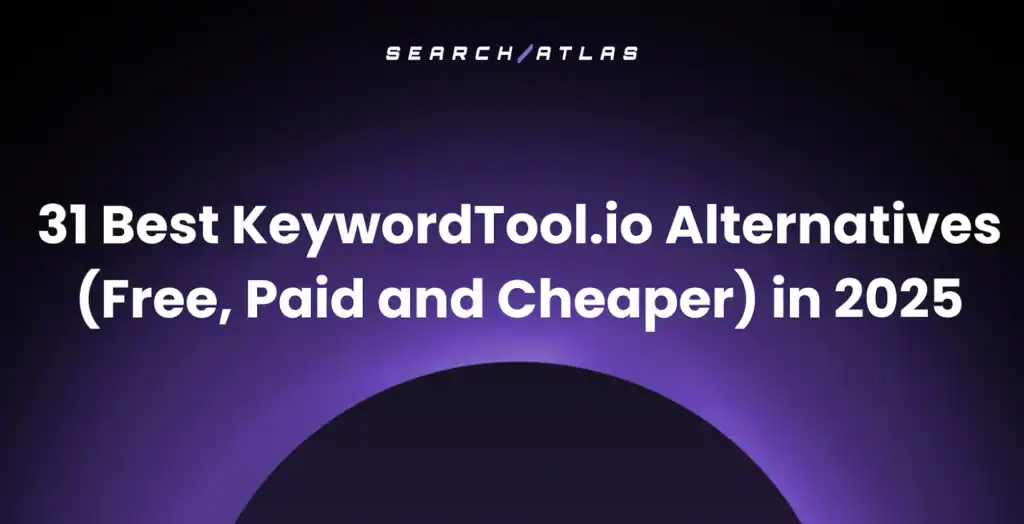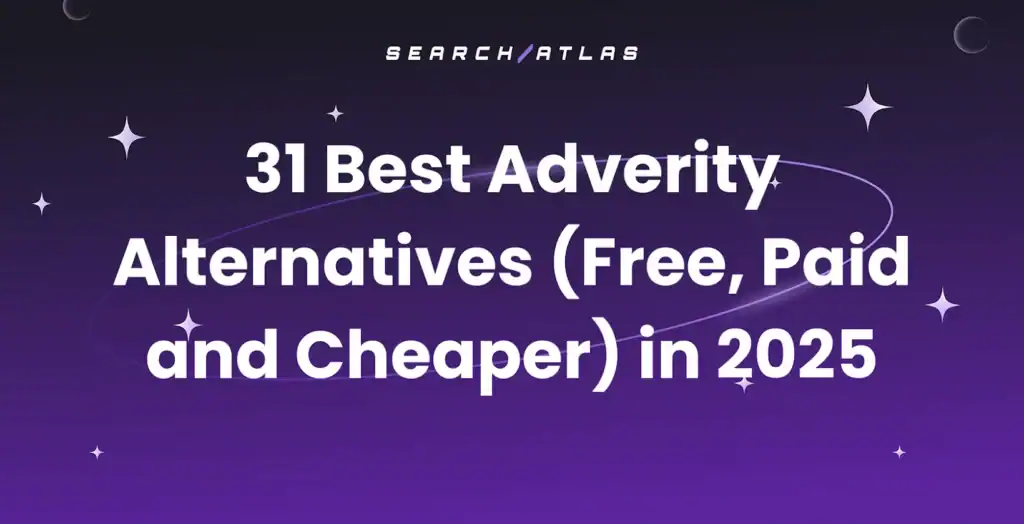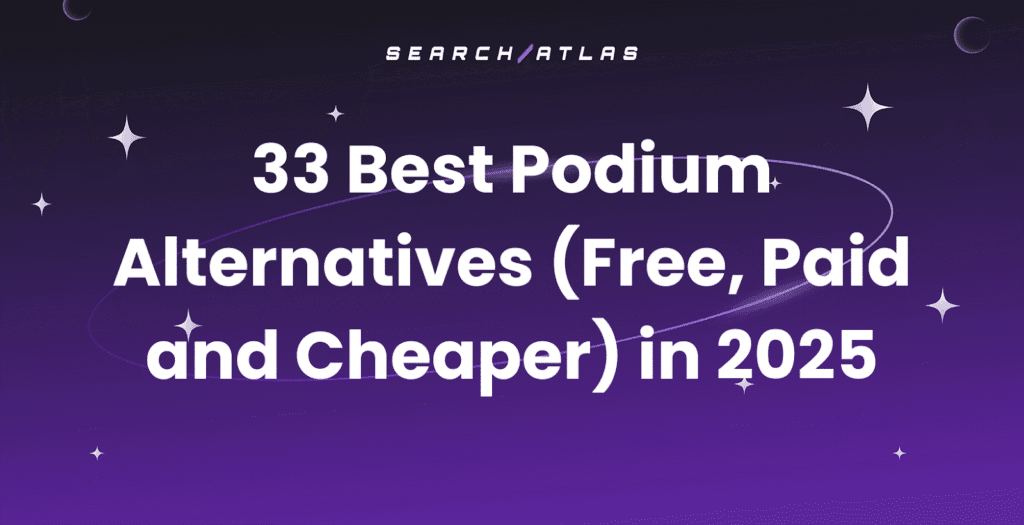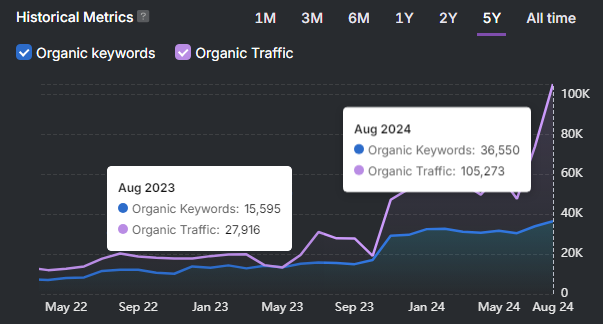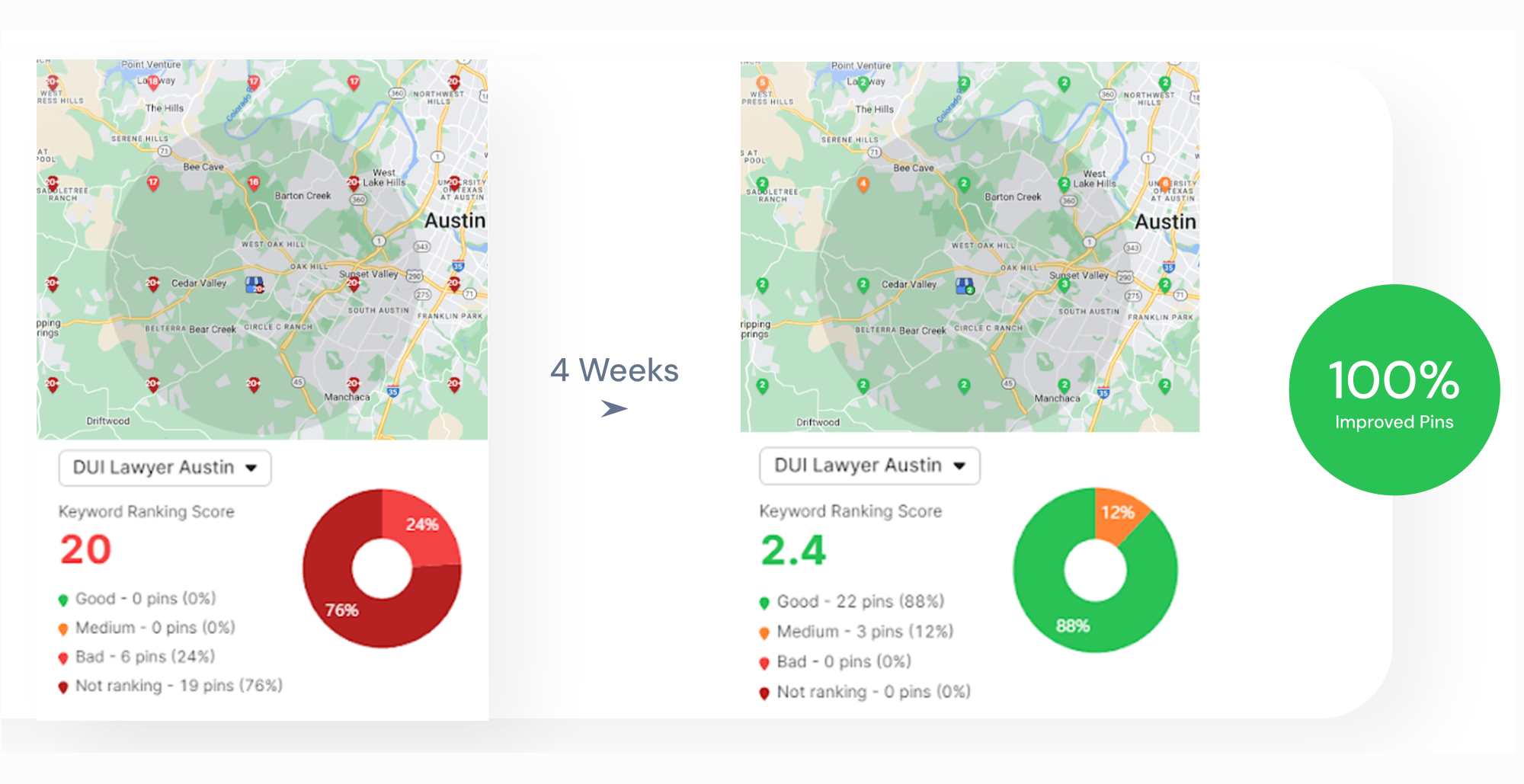Not getting the traffic you expected, even after putting effort into your content? Your search visibility might be lower than it should be. 🙈
This metric shows how often your pages appear in search results and how many clicks they attract. When visibility is low, even well-written content can go unnoticed.
This article explains search visibility, how it’s calculated, and why it matters for your site’s SEO performance. You’ll also learn what affects it and what you can do to improve your chances of showing up on page one.
What Is Search Visibility?
Search visibility shows how many clicks your website is likely to get from Google, based on where your pages rank for certain keywords.
Let’s say one of your keywords gets searched 100 times a month. If your website gets 10 of those clicks, your visibility for that keyword is 10%. The higher your rankings, the more clicks you’ll usually get and the higher your search visibility will be.

Why Search Visibility Matters
Search visibility plays a big role in how often people find your website. The more visible you are, the more chances you have to bring in visitors and build trust with your audience.
Visibility vs. Traffic
Search visibility shows the potential for traffic, while traffic shows the results.
For example, if your site has high visibility but low traffic, it may mean your pages are ranking but not getting clicks (possibly due to weak titles or irrelevant content).
If visibility is low, your site simply isn’t appearing enough to bring in visitors. Monitoring both helps you spot what you can improve.
The way you can monitor that is by checking your Google Search Console stats. Compare your impressions (visibility) and clicks (traffic), and then look for keywords with high impressions but low clicks—those are your quick-win opportunities.
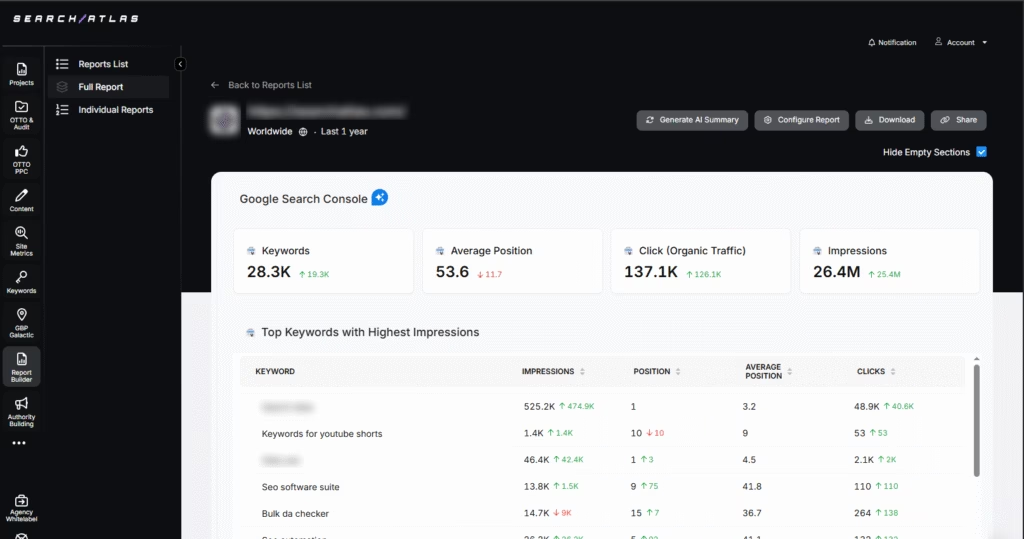
How Visibility Reflects Your Overall SEO Health
Search visibility gives you a snapshot of how well your SEO is performing across the board. It’s influenced by rankings, site structure, page speed, mobile usability, and more.
A steady increase in visibility often means your SEO strategies are working. A drop could signal a technical issue, a lost ranking, or new competition.
Brand Awareness and Competitive Advantage
When your site consistently shows up in search results, people start recognizing your name—even if they don’t click right away. That repeated exposure builds trust and familiarity, which makes them more likely to click next time or search for you directly.
If your competitors are showing up more often than you are, they’re winning that attention.
Track your top competitors’ visibility for shared keywords. If they’re outranking you, study their content, titles, and backlinks to find ways to improve your own pages.
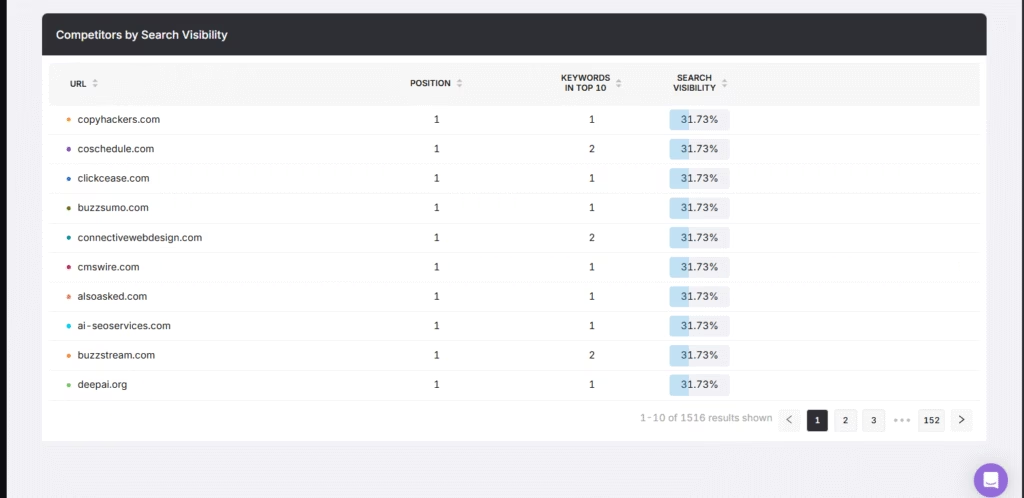
How Search Visibility Is Calculated
Search visibility is usually shown as a percentage, and it’s based on how well your website ranks for a set of keywords and how likely those rankings are to earn clicks.
The basic idea combines keyword positions, search volume, and click-through rates (CTR). Pages that rank higher for high-volume keywords contribute more to your overall visibility. A page ranking in the top 3 will naturally get a higher share of clicks than one sitting on page two.
The Role of SERP Features
Featured snippets, image packs, local maps, and other SERP features can affect how visible your content is, even if it ranks high.
For example, if you rank #1 but a featured snippet appears above you, that can reduce your click-through rate. Visibility calculations often factor these elements in to give a more realistic view of your exposure in search.

Also, remember that each tool uses its own data and formula, so the numbers may vary slightly.
Key Factors and Actions to Improve Your Search Visibility
Search visibility is influenced by a range of factors, but the good news is that most of them can be improved with the right strategies.
Let’s explore what affects your visibility and how you can improve it. 🛠️
Keyword Rankings and Research
The position of your pages for target keywords is one of the strongest drivers of visibility. Ranking in the top spots (especially the first three) leads to higher click-through rates and more exposure.
To increase your chances of ranking well, focus on identifying the right keywords. Use tools to find high-volume, low-competition keywords that align with your content, and make sure you’re targeting the terms that matter most to your audience.
In Search Atlas, you can see each keyword’s search visibility in the Rank Tracker, along with other metrics such as search volume and historical positions.

Content Quality and Relevance
Search engines prioritize content that effectively answers user intent. To improve your visibility, create well-researched, high-quality content that provides value to users.
The more relevant and comprehensive your articles, the higher your chances of ranking well. And if you’re not doing that already, you have to ensure you’re following Google’s E-E-A-T guidelines.
So, how will you know how search engines see your content compared to your competitors’?
By reverse-engineering data we got from studying hundreds of sites, we created a semantic grader tool that lets you analyze and compare your content based on metrics like:
- Factuality
- Human effort
- Numerical Content
- Content Freshness
- Contextual Flow
- Entity Score
- Readability
- Query Relevance
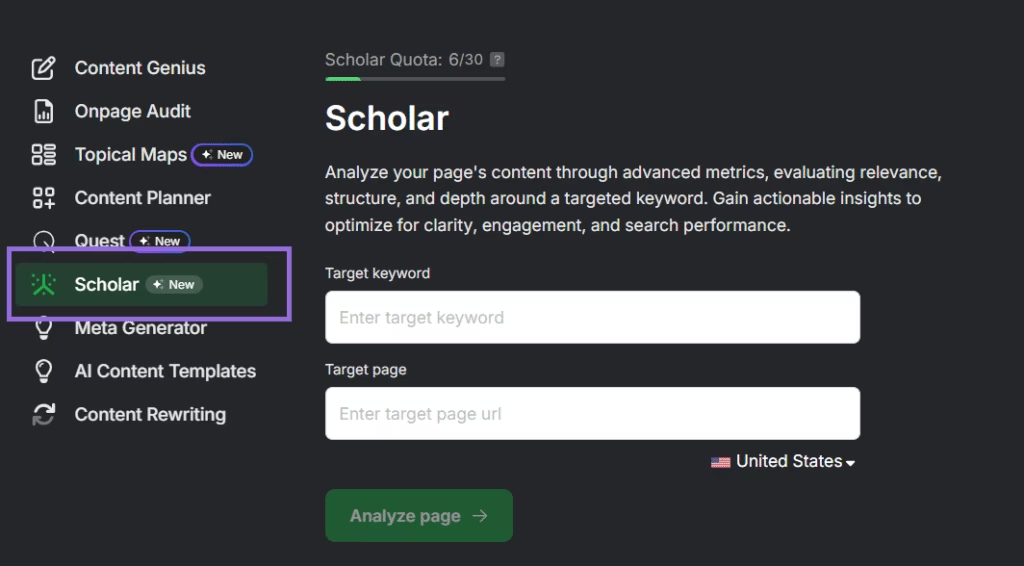
Technical SEO and Site Health
Without a solid technical foundation, your visibility will suffer, even if your content is great.
Here are the main areas to focus on:
- Mobile-Friendliness: Make sure your website looks good and works well on all screen sizes.
- Site Speed: Slow pages can frustrate users and hurt your rankings. Improving your site speed leads to a better experience and better search performance.
- Proper Indexing: Ensure that search engines can easily find and index your pages. While tools like force indexing can help speed up the process, you still need long-term, solid indexing practices.
- Structured Data: Use schema markup to help search engines understand your content better.
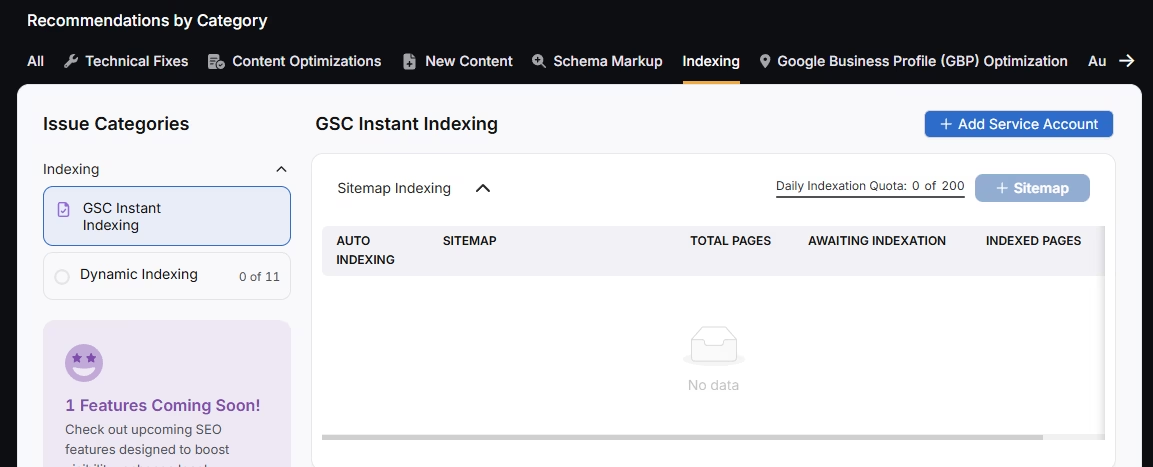
Backlinks and Domain Authority
Search engines treat backlinks as votes of confidence. The more authoritative websites that link to your content, the more visible you’ll be in search results.
To strengthen your backlink profile, focus on building quality links through strategies like guest blogging, influencer outreach, creating shareable content, or joining the world’s largest publisher exchange.
At the same time, you have to work on becoming an authority in your niche by covering the topic more thoroughly or in a better way than your competitors.
This is also known as Topical Dominance, and along with Page Quality, it’s a crucial ranking factor. We’ve actually managed to quantify this metric using AI and created a unique tool for content gap analysis.
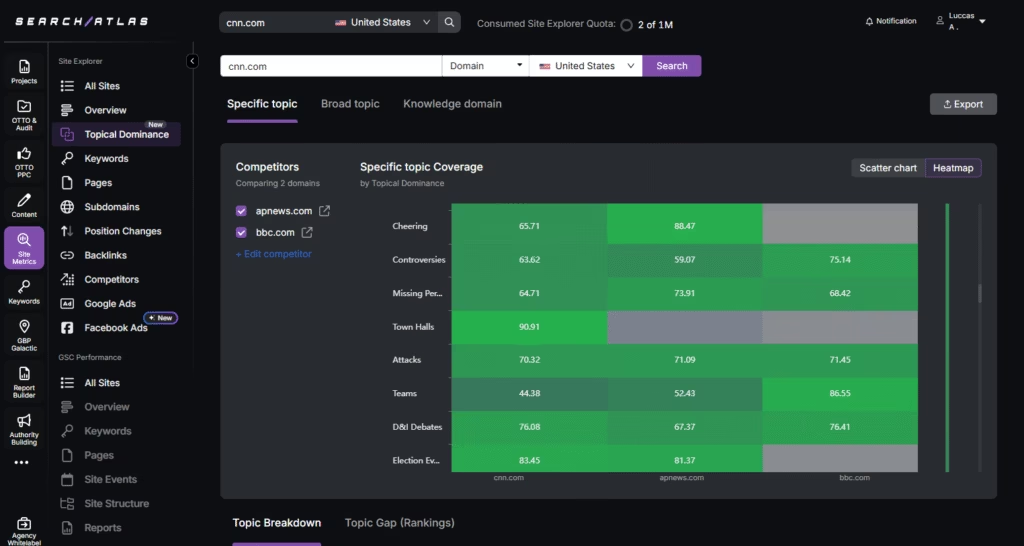
Topical Dominance is a part of Domain Power, a new, improved way to measure your site’s authority.
On-Page SEO
On-page SEO is crucial for visibility. This includes optimizing your page titles, meta descriptions, header tags, images, and more.
Make sure your pages are well-structured, easy to read, and follow internal linking best practices.
If you run an agency and manage multiple client websites, the workload may be stopping you from further growing your business. If that’s the case, consider automating a large chunk of your SEO tasks, including on-page SEO, with OTTO.
Monitor, Adjust, and Grow
SEO is a continuous process. Regularly monitor your search visibility, keyword rankings, and traffic to see what’s working and where improvements are needed.
When tracking search visibility, keep an eye on these key metrics:
- Impressions: How often your site appears in search results for specific keywords.
- Click-Through Rate (CTR): The percentage of people who click on your site after seeing it in search results.
- Rankings: Your position in search results for specific keywords.
- Traffic: The number of visitors your site receives from search engines.
Improve Your Search Visibility With the Help of AI
Search visibility isn’t just a number; it’s a reflection of your website’s ability to be seen, clicked, and engaged with.
The better your visibility, the more opportunities you have to grow your audience, build brand trust, and gain an edge over competitors. But achieving and maintaining that visibility requires lots of effort.
The good news? You don’t have to do it all manually. With the power of automation, you can streamline and refine your SEO processes, making improvements faster and more efficiently.
Ready to take your search visibility to the next level? Sign up for a free trial with Search Atlas today and make your job easier with automation.


